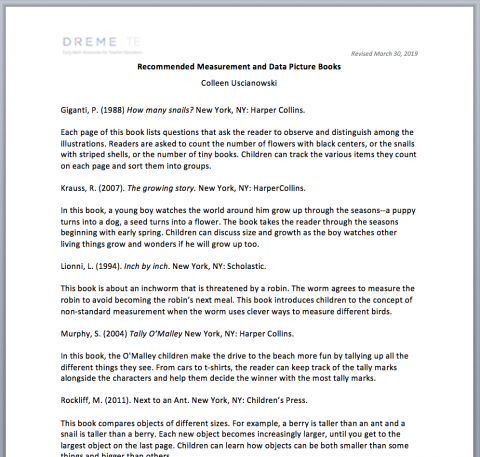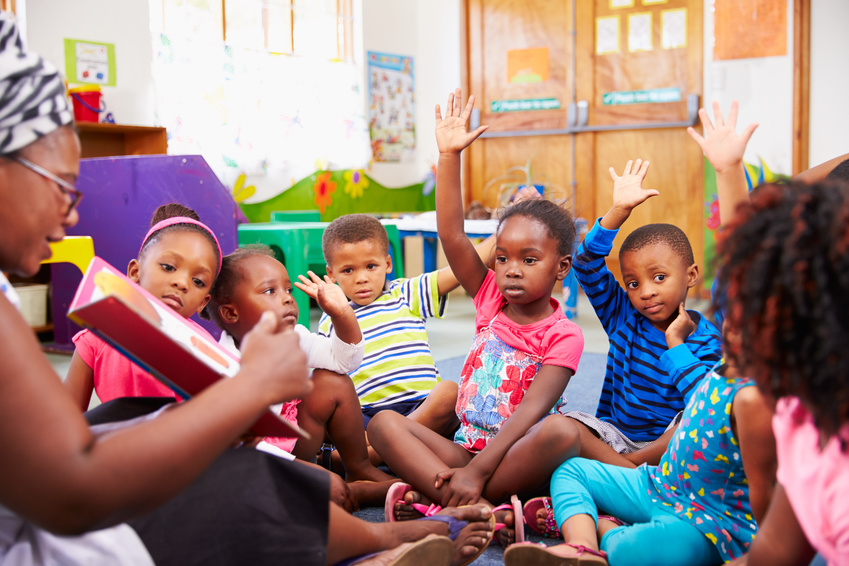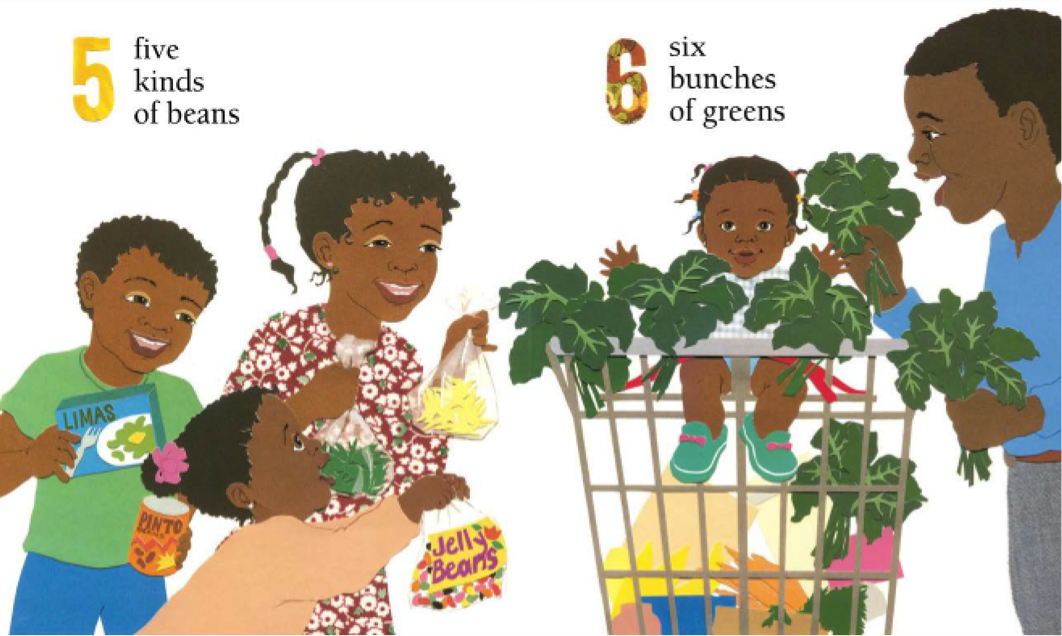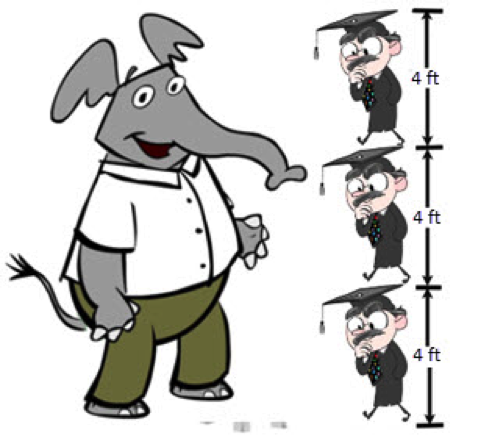Imagine that you, a teacher, are preparing to read a book to a child or group of children and you want to use the story as an opportunity to develop their understanding of measurement. This document describes how you might proceed.
Revised March 30, 2019
Recommended Measurement Picture Books

Supporting Engagement with Measurement Books
Preparing to Read
You can use Analyzing Picture Books—An Overview with its downloadable Math Picture Book Analysis Guide to help you examine and select one or more measurement books. Review How to Use Picture Books for some general tips for how to plan to read books with children.
Consider a specific example. This two-page spread is from Just a Little Bit by Ann Tompert, a book about an elephant and a mouse who play together on a seesaw, with the help of their animal friends. On these pages, the animals pile up on the right side of the seesaw to try to balance the elephant’s weight.
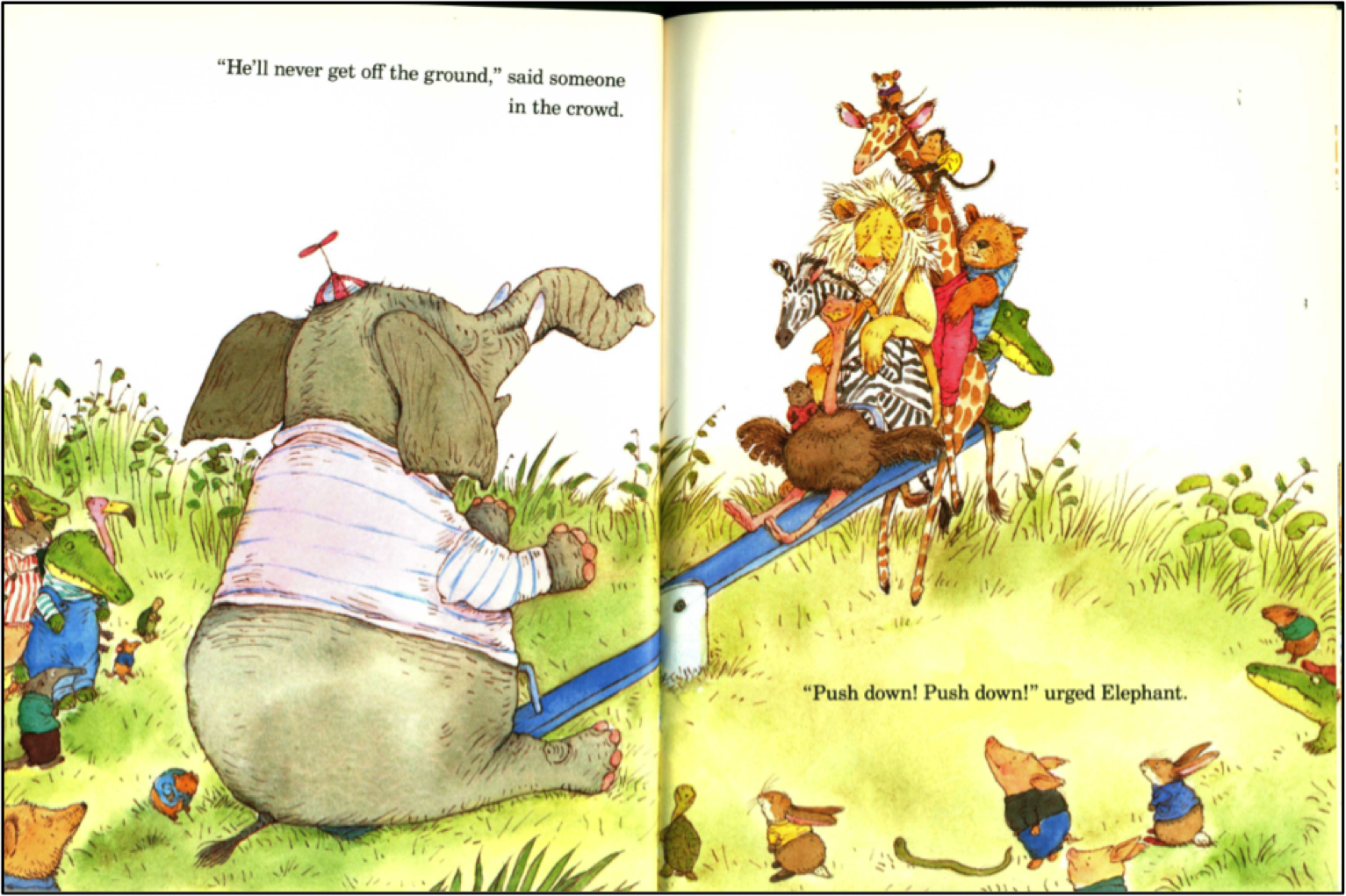
Look through the book from a child’s perspective. On the pages above, the seesaw can be thought of as a scale, or a tool to measure weight. However, children may confuse balancing the weight of the animals with balancing the number of animals on either side of the scale. Here the number of animals on either side does not matter. We have one animal on the left side and nine animals on the right side, yet the scale is tilted towards the one animal. The child can work on understanding that the one animal is heavier than the other nine animals combined. It is the weight and not the number of animals that will eventually balance the seesaw.
During Reading
Ask questions.
As appropriate, ask a variety of question types, both lower-level and higher-level.
- Lower-level questions are relatively simple and concrete, addressing what children see directly on the page as well as key words from the text that you think they might not understand. For example:
- Recall: What animals have climbed on the seesaw so far?
- Label: What is this animal called?
- Describe: How many animals do you see? What are the animals doing on this page?
- Higher-level questions are relatively complex and abstract, asking children to engage in deep thinking and go beyond the literal events on the page. For example:
- Predict: Do you think the elephant will ever get off the ground? How?
- Infer: Why do you think the seesaw hasn’t moved, even after all these animals climbed on the other end?
- Summarize the story across multiple pages: Has anything changed from the beginning of the story to the end?
Explore children’s responses.
Expand on children’s thinking by elaborating on their responses and asking follow-up questions. For example:
Teacher: (reading from the text) He’ll never get off the ground, said someone in the crowd.
Child: I think the elephant will get off the ground!
Other children: Me too!/No it won’t!
Teacher: Some of you think the elephant will get off the ground. How do you think that will happen?
Child: With more animals.
Another child: More and more and more and it will go down.
Teacher: So you think more animals will make their side heavier? Let’s keep reading and find out.
Model complex thinking.
Children learn by listening to you, the adult, model productive ways of thinking about the story. For example:
- Teacher: I notice that these animals are all squished on the right side of the seesaw, but the elephant is still on the ground! That makes me think the elephant must be heavier than all those animals. What do you think?
After Reading
After finishing the book, engage the children in a discussion about the story.
More Examples for Measurement Books
Below are suggestions for how you can use picture books that lend themselves to measurement as part of classroom instruction. In books of this type, the measurement content may be implicit or explicit in the story and the title may or may not make explicit mention of measurement. The next example comes from Ae-hae Yoon’s Who Eats First?, a book about animal friends who find a delicious peach but can’t decide who should take the first bite. Each animal makes an argument explaining why it should go first. On this two-page spread, the caterpillar is explaining why it should be first. Note that the content is mostly about measurement, and in fact uses the word measure in the text. But the title of the book does not explicitly state measurement as the theme. This is very different from a book like Anno’s Counting Book, or Eve Merriam’s 12 Ways to Get to 11 (about the decomposition of numbers).
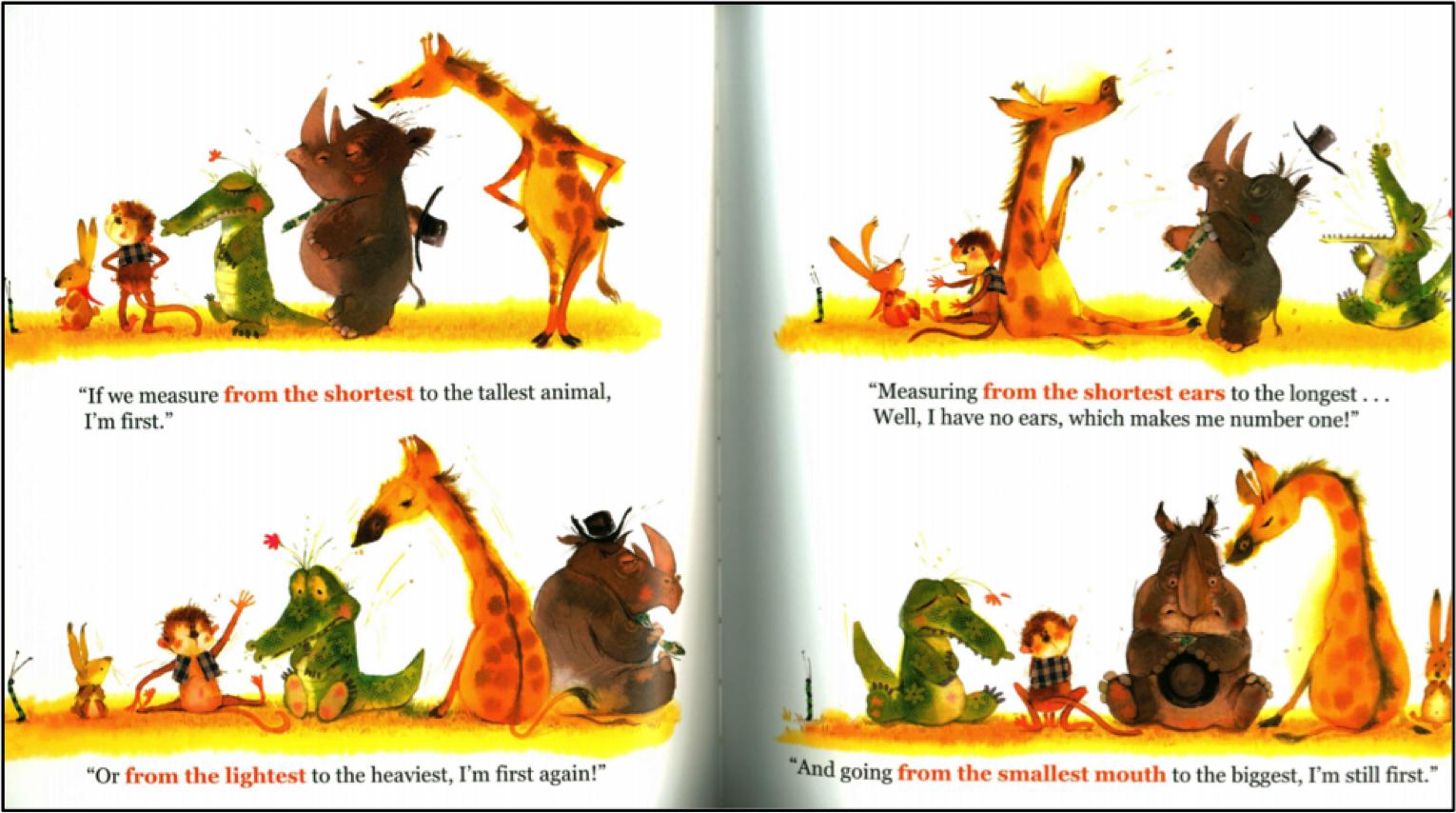
What Children Can Learn
While reading and discussing a storybook like Who Eats First? children learn and demonstrate their understanding of many math concepts. Here are some examples of what children can learn about measurement and how you can ask questions. The questions below are suggestions only, not a script. You need to modify them in response to the individual child and the story and pictures.
How to measure many different attributes of objects. For example:
- I see the animals lined up in size order from shortest to tallest. Besides height, how else can the animals measure themselves?
- The giraffe is the tallest, but he’s not the heaviest. Which is the heaviest animal?
How to compare the sizes of different objects using a tool. For example:
- Some animals are heavy and some animals are light. How can we find out which animal is the heaviest and which animal is the lightest?
- Some animals are tall and some animals are short. What can we use to find out which animal is the tallest and which animal is the shortest?
How to put items in size order from shortest to tallest or biggest to smallest. For example:
- If we lined up the animals from heaviest to lightest, who would be first in line? Who would be last?
Questioning the Child
Regardless of the content (attributes of objects, size comparison, size order, etc.) you should ask both lower-level and higher-level questions as appropriate.
Lower-Level Questions
Ask children to describe the scene and notice how many relevant words they use spontaneously.
- What’s happening on this page?
Ask children to identify objects based on their size.
- Can you find the tallest animal?
- Which animal has the shortest ears?
Ask children to attend to two attributes simultaneously.
- Do you see a short animal with a long snout?
- Which animal has a long tail and small ears?
Higher-Level Questions
Ask children to predict the order of animals if you line them up in various ways.
- Let’s say they lined up in order from the animal with the shortest tail to the animal with the longest tail. Which animal would be first in line? Which animal would be last?
Ask children to summarize what happened across multiple pages.
- First, giraffe thought that the tallest animal should eat first. What happened after that?
Ask children to explain the character’s motivation.
- Why are the animals each suggesting different ways of measuring themselves?
- Why does the rhino think that the heaviest animal should get the first bite of the peach?
Ask children to consider how they would measure the animals.
- How would you measure the height of a giraffe?
- How would you find out the weight of the rhino?
After the Story
Young children benefit from many experiences measuring the attributes of objects they encounter in their everyday lives. After reading the story, you can have children choose different classroom objects, such as a wooden block, a pencil, and a toy from the play area to measure.
You can give children stuffed, plastic, or rubber animals to work with. Children can choose an attribute to measure, such as weight, and make a prediction about which object is heaviest and which is lightest. Then children can practice using a scale to measure the different objects and discuss whether their predictions were correct. They could also put the objects in a line and order them based on the attribute.

